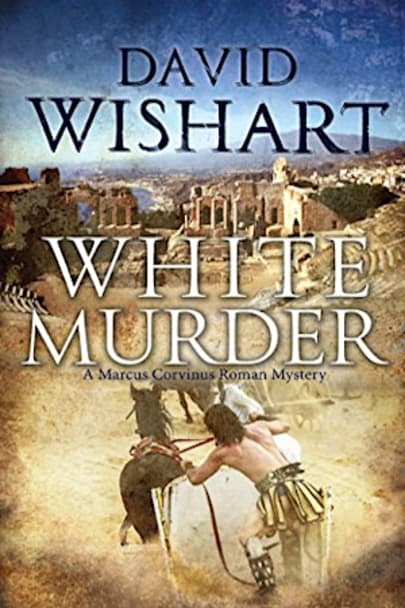‘Uh…Dad?’ Young Lucius’s face was chalk white. ‘Dad, I think he’s dead.’It took a moment to register. Then Renatius dropped the towel and was through the door in five seconds flat, and the rest of the wineshop, including me, were about two seconds behind him.When Pegasus, racing mega-star and lead driver of the Whites faction, is found stabbed to death in the alleyway beside Renatius’s … Renatius’s wineshop, Marcus Corvinus is already on site. The local District Watch – crooked to a man – claim that the killer’s motive was simple theft, but Corvinus knows it wasn’t.
Tracking the murderer down, with the often-unwilling help of his wife Perilla, takes him deep into the murky world of Roman chariot-racing with all its secrets, skulduggeries and scams; and his task is not made any easier by the fact that in the process he has a lovesick major-domo, an invisible dagger and Mount Etna to contend with.
The seventh book in the Marcus Corvinus series.
more



White Murder deals with one of Rome’s most cherished, most popular sports – chariot racing!
*** What to expect
First, of course, is the subject mater. Historically, “Bread and Circuses” – or “games” in general – referred to racing a lot more than it referred to gladiatorial games (the Circus Maximus racing arena was older, and could host at least three times more spectators than the famous Colosseum). Just like soccer or football today it was the true obsession for Roman-era sports fans, at all levels of society (where do you think Caligula got his favourite horse from, before trying to appoint it a senator?)
This novel brings us in-depth treatment of the four “factions” (racing clubs), how they competed both on the track and off it: luring the best drivers, getting the best horses, closely guarding their clubs and ensuring the prime positions. And naturally we also get a glimpse into the darker aspects, from the scams and backstabbing to the large scale organised gambling and crime that were associated with it.
Although this is book 7 of the series and there is some continuity from past books (recurring characters), because events are not related to the previous novels it can be read out of order. Only the first three deal with more historical events (where order is important), and the rest of the series so far are fairly independent mysteries.
*** What I liked
I absolutely love the treatment of chariot racing (which far eclipsed gladiatorial games at the time), as well as Corvinus’ usual sleuthing style. Perilla (his wife) is also a bit more active and present here, which is often missing in other novels, and the B-story (love amongst the bought help) is an entertaining counter-point.
As usual, Wishart’s research into and depiction of Roman life is absolutely excellent. The mystery itself is in the style of traditional hard-boiled detective, as he chases clues and suspects around town, and even goes on a field-trip to Sicily.
As with the previous novels, Wishart uses a modern language to bring the characters to life. He’s also using a time-honoured trope of representing the Roman patriarchy similar to British aristocracy. The result is a novel that reads as a cross between Sam Spade and Downton Abbey, on a backdrop of ancient Rome. It makes for very enjoyable reading for lovers of those genres.
*** What to be aware of
To give this worthy subject the treatment it deserves, the book’s length is comparable to epic fantasy more than your usual detective. Wishart covers a lot of ground in this one – which is not a complaint, as it’s highly enjoyable.
Though Wishart’s prose is excellent, he avoids all Latin terms to the point where it’s a bit much (like referring to a toga as a mantle, or to the Forum as Market Square). I find this a bit diluting the experience of Rome, which is a big factor to anyone reading Roman-era fiction.
*** Summary
The novel is so far my favourite of the series. If you like Roman-era mysteries by Lindsey Davis, Steven Saylor, Ruth Downie and the like, you really need to read the Corvinus series as well. This is as good a starting point as any.
—
Assaph Mehr, author of Murder In Absentia: A story of Togas, Daggers, and Magic – for lovers of Ancient Rome, Murder Mysteries, and Urban Fantasy.